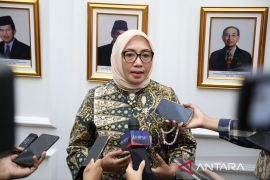The performance of BOP was supported by an improvement in the capital and financial account surplus combined with a current account deficit that remains manageable," Executive Director of the Bank Indonesia (BI) Communication Department Onny Widjanarko noted in a statement in Jakarta on Monday.
Consequently, the position of reserve assets at the end of December 2019 had reached $129.2 billion, up from $124.3 billion at the end of September 2019, equivalent to 7.6 months of imports or 7.3 months of imports and servicing government external debt, which is well above the international adequacy standard of three months of imports.
A marked rise in the capital and financial account surplus in Q4 of 2019 mirrored investor optimism about the domestic economic outlook.
The capital and financial account surplus had reached $12.4 billion in Q4 of 2019, higher than $7.4 billion in the previous quarter.
A significant surplus was attributable to an influx of portfolio investment chiefly on government and corporate issuance of global bonds. Furthermore, other investment accounts also recorded surplus on the back of offshore deposit withdrawals from domestic businesses as well as an increase in non-resident placements in the domestic banks.
Such dynamics corroborate the positive perception held by investors on the national economy prospects coupled with attractive domestic financial assets.
According to Widjanarko, the current account deficit has been maintained in Q4 of 2019, thereby bolstering external sector resilience for Indonesia.
A current account deficit of $8.1 billion, or 2.84 percent of the GDP, was posted in Q4 of 2019, supported by a larger non-oil and gas trade surplus, as non-oil and gas imports shrank amid restrained non-oil and gas exports.
On the other hand, the oil and gas trade deficit expanded in line with larger oil imports to fulfill higher demand due to a seasonal spike at the end of the year.
The BOP developments in 2019 mirrored solid external sector resilience. The BOP in 2019 registered a surplus of $4.7 billion, improving from a deficit of $7.1 billion in 2018.
This improvement was propelled by decreasing current account deficit and soaring capital and financial account surplus. The current account deficit narrowed to $30.4 billion, or 2.72 percent of the GDP, from a deficit of 2.94 percent of the GDP in the last year. Such developments primarily stemmed from a goods trade surplus, in contrast to the deficit posted in the previous year.
The goods trade surplus was attributed to the increase in non-oil and gas trade surplus combined with the decline in oil and gas trade deficit as an impact of policies to control import, including the B20 program that has reduced oil imports.
Moreover, despite uncertainty blighting the global financial markets, the capital and financial account recorded a significant $36.3-billion surplus, up from a 25.2-billion surplus in the 2018, driven by a deluge of long-term capital inflows.
Looking forward, Indonesia’s BOP is expected to remain solid, thereby bolstering external sector resilience.
The BOP outlook is supported by a manageable current account deficit in 2020 within the 2.5-3.0 percent range of the GDP and a maintained influx of foreign capital riding on positive investor perception in the domestic economic outlook.
BI will continue to strengthen the policy mix in order to maintain macroeconomic and financial system stability and strengthen policy synergy with the government and other relevant authorities to improve external sector resilience, including efforts to attract more Foreign Direct Investment (FDI).
Related news: Indonesia's balance of payment remains solid: BI
Related news: Balance of payment control needed to meet global pressure: Minister
EDITED BY INE
Translator: Achmad Buchori, Azis Kurmala
Editor: Suharto
Copyright © ANTARA 2020












